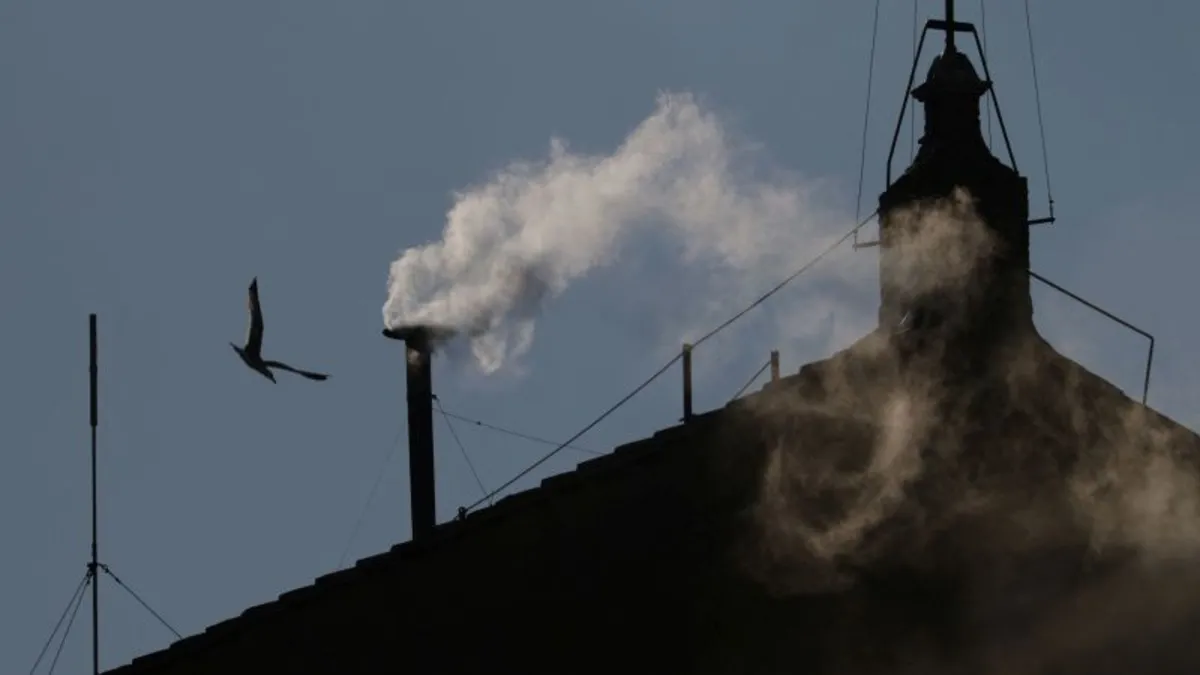
White smoke has risen above the iconic Sistine Chapel, signaling the election of a new pope on the second day of the conclave. The identity of this new pontiff, along with the name he will adopt, will be revealed shortly. The cardinals took just two days to select the new leader of the Catholic Church, matching the timeline of previous conclaves. This rapid decision-making hints that a leading candidate quickly garnered support from his peers during the secretive voting process.
Historically, both Pope Francis and Benedict XVI were announced in the evening of the conclave’s second day. In contrast, John Paul II, the longest-reigning pope in modern history, was selected on the third day of the conclave in 1978. The assembly of 133 cardinals, representing 71 different nations and encompassing a spectrum of progressives, conservatives, and self-styled unifiers, voted to choose the new pontiff. The chosen candidate will have skillfully navigated these diverse factions to ascend to the balcony of St. Peter’s Basilica, where he will soon address the eager crowds below.
Crowds are gathered in St. Peter’s Square, anxiously awaiting a glimpse of the newly elected pope. The French Cardinal Protodeacon Dominique Mamberti is poised to deliver the historic announcement in Latin, proclaiming “Habemus Papam!” (“We have a pope!”). Following this announcement, the new pope’s chosen name will be revealed, and he will briefly address the faithful, concluding with a prayer. The formal coronation ceremony will occur in the days following his election, as has been tradition, with the last two popes inaugurated in the grand setting of St. Peter’s Square.
The coming days are set to be filled with celebration as the new pontiff’s name will resonate in homilies and masses throughout the Catholic world. This joyous occasion will be particularly marked in his home country. Additionally, 2025 marks a significant jubilee year for the church—a special celebration first announced by Pope John Paul II 25 years ago. This jubilee will bring a busy schedule of events organized by the Vatican, further adding to the new pope’s commitments.
Leading the largest Christian denomination during these unpredictable times will require the new pope to make challenging and consequential decisions. He inherits a church whose image and priorities were significantly shaped by his predecessor. Pope Francis shifted the church's focus away from contentious social issues such as abortion, homosexuality, gender roles, and contraception, placing greater emphasis on serving the world’s poor and marginalized. The new pontiff will face a pivotal choice: whether to continue this trajectory or revert to more traditional stances.
While some Western leaders praised Francis’ rejection of opulence and his softer approach to social issues, there remains a faction within the church that advocates for a stricter stance on matters of sex, gender, marriage, and migration. The new pope must also strategically decide when to engage on the world stage. Over the latter part of his papacy, Francis became increasingly involved in political discourse, advocating for migrant rights, urging a ceasefire in the ongoing Israel-Hamas war, and controversially suggesting that Ukraine should consider concessions to end the conflict with Russia.
The new pope will also need to confront significant challenges within the church. Francis struggled to resolve the ongoing scandal of child sexual abuse within the church, an issue that will undoubtedly echo throughout his successor's papacy. Although Francis took important steps to address systemic abuse issues, he faced criticism from survivors' groups for not holding accountable bishops and cardinals accused of covering up abuse. Last year, his commission for child protection reported that parts of the church still fall short in ensuring that abuse cases are properly reported, raising concerns about a “lack of transparency” in the Vatican's handling of such matters.
This is a breaking story, and more updates will follow as details emerge.